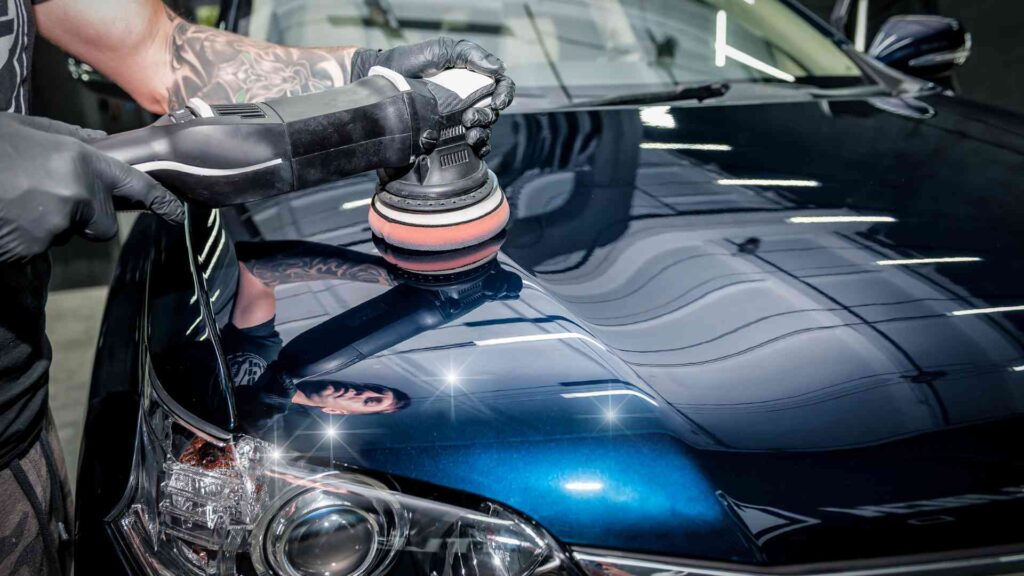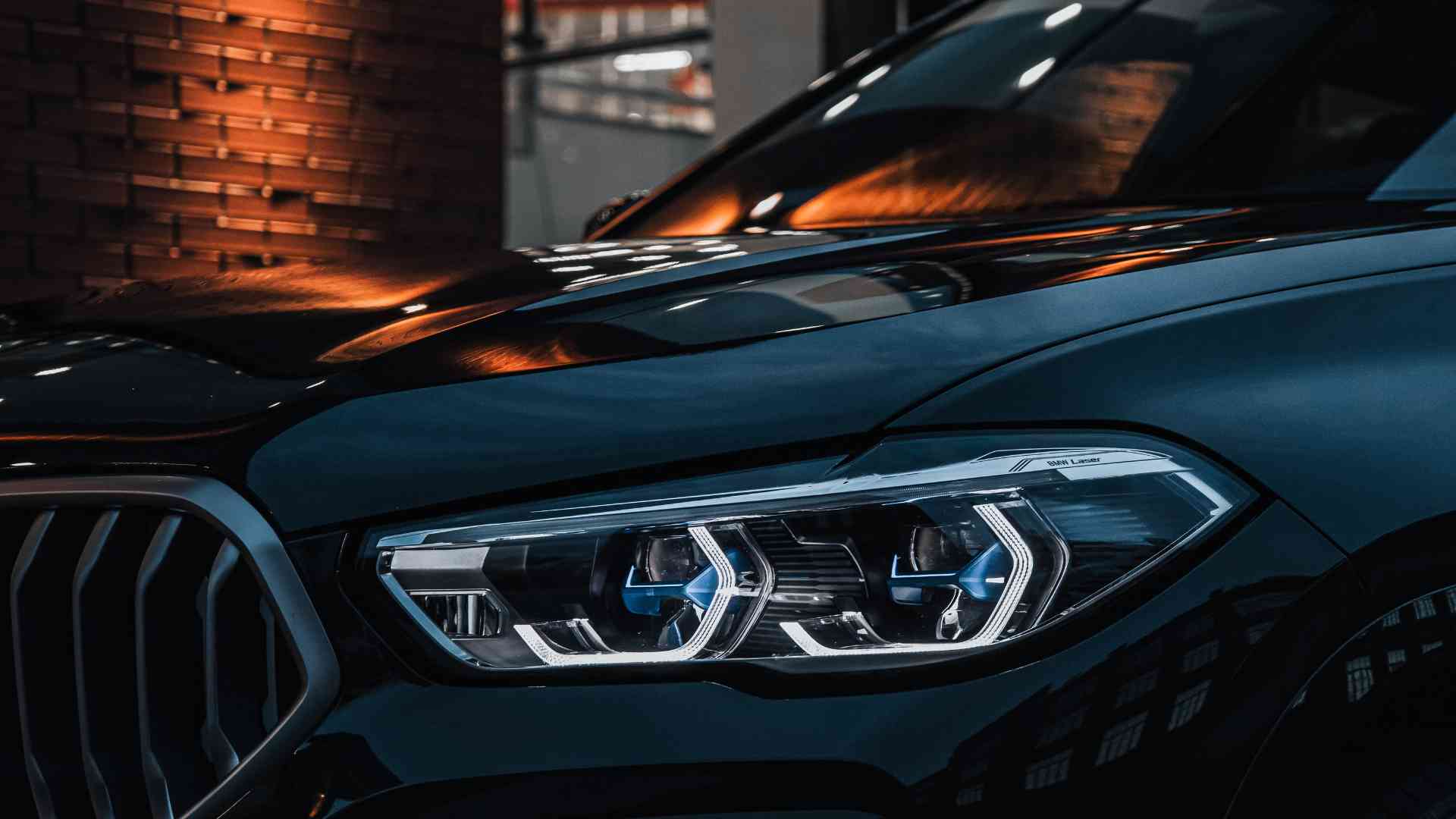Car paint protection is a crucial aspect of maintaining the aesthetic appeal and longevity of your vehicle’s exterior. In the realm of automotive care, the revolutionary solution that has garnered widespread attention is ceramic coating. This advanced technology goes beyond conventional waxing, offering a robust shield against environmental contaminants and harsh weather conditions. Car Paint Protection with ceramic coating has become synonymous with unparalleled defense, elevating the appearance of vehicles and ensuring they stand the test of time.
At its core, ceramic coating is a nanotechnology-driven innovation designed to create a protective layer on the surface of your car’s paint. The application of this coating forms a strong bond with the factory paint, providing a shield that is resistant to contaminants like dirt, bird droppings, and road salts. Unlike traditional methods, ceramic coating doesn’t just sit on the surface; it chemically bonds with the paint, offering a long-lasting and durable solution for car paint protection.
One of the secrets that sets ceramic coating apart is its hydrophobic nature. This characteristic ensures that water and other liquids bead up and roll off the surface, preventing water spots and making the cleaning process a breeze. This hydrophobic effect not only adds to the visual appeal but also reduces the need for frequent and laborious car washes. With car paint protection through ceramic coating, the maintenance of a pristine, showroom-quality finish becomes more convenient than ever.
Exploring the Advancements in Nanotechnology Ceramic Coating

Car paint protection has undergone a remarkable transformation with the advent of nanotechnology ceramic coating. In the ever-evolving landscape of automotive care, the focus on preserving and enhancing the longevity of a vehicle’s exterior has led to groundbreaking advancements in coatings. Nanotechnology, in particular, has emerged as a game-changer, offering an innovative solution that goes beyond traditional methods. Car Paint Protection enters a new era with nanotechnology ceramic coating, where the microscopic becomes a mighty shield against environmental elements.
At the heart of this technological leap is the exploration of nanotechnology ceramic coatings. These coatings leverage nanoscopic particles to create a protective layer on the surface of the car’s paint. The application of nanotechnology in car paint protection is revolutionary, as it enhances the coating’s durability and effectiveness. These microscopic particles bond with the paint at a molecular level, providing an unparalleled shield against contaminants such as dirt, road salts, and pollutants. The result is a robust defense mechanism that significantly surpasses conventional protective measures.
The exploration of nanotechnology in ceramic coatings delves into the science behind the innovation. Understanding how these minuscule particles function to safeguard the vehicle’s exterior is key to appreciating the advancements in car paint protection. Nanotechnology ceramic coatings not only form a strong and resilient barrier but also contribute to the enhancement of the paint’s overall appearance. The depth and shine achieved through nanotechnology are unparalleled, making it a sought-after solution for car enthusiasts and meticulous owners alike.
Discover the Unmatched Benefits of Car Paint Protection
Discover the Unmatched Benefits of Car Paint Protection
Car enthusiasts and practical car owners alike are increasingly recognizing the invaluable benefits of investing in car paint protection. Beyond the allure of a pristine shine, this innovative solution offers a myriad of advantages that go beyond traditional waxing or polishing. One of the primary benefits of car paint protection is its ability to create a durable shield against environmental contaminants. This protective layer acts as a barrier, guarding the vehicle’s exterior against the detrimental effects of dirt, bird droppings, road salts, and harsh weather conditions.
In addition to its protective qualities, car paint protection significantly contributes to the preservation of the vehicle’s resale value. The coating acts as a safeguard, preventing deterioration of the paint and ensuring that the exterior maintains its showroom-quality appearance. This not only enhances the aesthetic appeal of the vehicle but also makes it a more attractive proposition for potential buyers in the future.
Furthermore, the application of car paint protection simplifies the cleaning and maintenance process. The hydrophobic nature of many modern coatings ensures that water, along with contaminants, easily beads off the surface. This not only reduces the frequency of car washes but also makes cleaning a quick and hassle-free task. The time and effort saved in maintenance make car paint protection a practical choice for those seeking a convenient solution to keep their vehicles looking impeccable.
WHAT IS A WHEEL FOR BUFFING?
A buffing wheel is a type of polishing tool that is used to convey polishing compound to smooth and polish metal surfaces. Using an industrial scale motor polisher or a handheld rotary drill, the compound is applied to the spinning buffing wheel. When the polishing compound is applied consistently on the revolving buffing wheel, the jewelry item is left shiny and smooth. These are some examples of buffing wheel types.
BUFFING WHEELS: TYPES
- Abrasive wheels for rough cutting and getting rid of jagged edges and deep scratches.
- Polishing discs with 3M Radial bristles eliminates the need for polishing compounds.
- Polishing tools for cylinders, bullets, and pins are helpful for hard-to-reach areas.
- Soft buffing wheels and mops are helpful for giving objects a polished, mirror-like sheen.
- Abrasive wheels for matting are helpful in producing a particular matte finish.
TYPES OF POLISHING
Following are the types of polishing:
- Utilizing a general-purpose or specialty abrasive slurry, soft or hard pads
- using either water-or oil-based diamond abrasive slurry to create soft or hard pads
- Hard pads with lubrication and diamond compound
- polishing with diamond slurry while using a composite plate
- polishing with diamond slurry while using a metal plate
- Lubricant and fixed-abrasive films (caught abrasive)
Among other potential uses, polishing can be used to restore a surface to its original condition or to get rid of scratches. Depending on the surface we are working on and the level of precision needed, different polishing tools should be used in different situations. In recent years, technological advancements have made certain solutions ready to assist us in speeding up and improving the safety of this sanding process.

